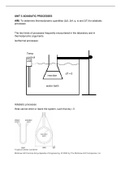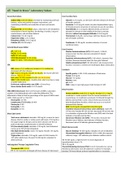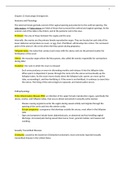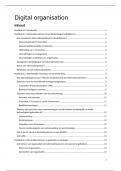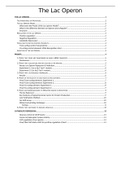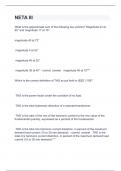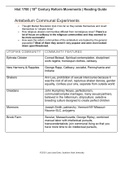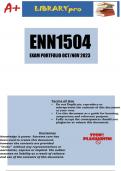AIM: To determine thermodynamic quantities (ΔU, ΔH, q, w and ΔT) for adiabatic
processes
The two kinds of processes frequently encountered in the laboratory and in
thermodynamic arguments
Isothermal processes:
Temp
control
unit
dT = 0
reaction
water bath
Adiabatic processes
Heat cannot enter or leave the system, such that dq = 0
A typical Dewar container
McGraw-Hill Concise Encyclopedia of Engineering. © 2002 by The McGraw-Hill Companies, Inc.
, The pressure-volume relationship for ideal, reversible adiabatic expansion of a
gas
Pext2
counterweight
Pext1 P2
P1
Thermally insulated wall
P1, V1, T1 → P2, V2, T2
Heat cannot flow into or out of system: dq =0
From first law of thermodynamics : dU = dq + dw
dU = dw (1)
For reversible expansion of n moles of ideal gas, the infinitesimal change in internal
energy (dU) wil cause infinitesimal change in temperature (dT):
𝑑𝑈 = 𝑛𝐶𝑣 𝑑𝑇
(2)
The infinitesimal work done (dw) will cause infinitesimal volume change (dV)
𝑑𝑤 = −𝑃𝑑𝑉
The expansion is for an ideal gas under reversible condition. The ideal gas equation
is therefore incorporated:
1
𝑑𝑤 = −𝑛𝑅𝑇 ( ) 𝑑𝑉
𝑉
(3)
From equa 1 condition, equations 2 and 3 can be set equal:
1
𝑛𝐶𝑣 𝑑𝑇 = −𝑛𝑅𝑇 ( ) 𝑑𝑉
𝑉
(4)

